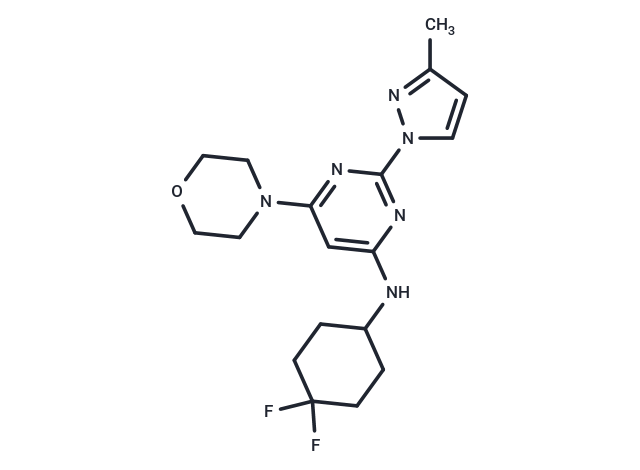Shopping Cart
- Remove All
 Your shopping cart is currently empty
Your shopping cart is currently empty

Rimtuzalcap (CAD-1883) (CAD-1883), a pioneering selective positive allosteric modulator of small-conductance calcium-activated potassium channels (SK channels), is employed in the study of movement disorders such as spinocerebellar ataxia (SCA) and essential tremor (ET).

| Pack Size | Price | Availability | Quantity |
|---|---|---|---|
| 1 mg | $30 | In Stock | |
| 5 mg | $71 | In Stock | |
| 10 mg | $113 | In Stock | |
| 25 mg | $227 | In Stock | |
| 50 mg | $337 | In Stock | |
| 100 mg | $476 | In Stock | |
| 200 mg | $666 | In Stock | |
| 1 mL x 10 mM (in DMSO) | $29 | In Stock |
| Description | Rimtuzalcap (CAD-1883) (CAD-1883), a pioneering selective positive allosteric modulator of small-conductance calcium-activated potassium channels (SK channels), is employed in the study of movement disorders such as spinocerebellar ataxia (SCA) and essential tremor (ET). |
| In vitro | Rimtuzalcap (Compound 1), a small-molecule modulator of potassium ion channels, exhibits significant therapeutic promise for addressing a range of diseases. These diseases are marked either by the dysfunction of potassium ion channels or by other factors affecting these channels[1]. |
| In vivo | Rimtuzalcap (CAD-1883) effectively decreases Purkinje cell firing rate by about 40%, aligning with its expected therapeutic action of enhancing SK channel activity through positive allosteric modulation. When applied in sequence, either 1 or 3 µM of CAD-1883 can partially reverse the augmented coefficient of variation in interspike intervals noted in cerebellar slices from 11-month-old spinocerebellar ataxia-2 58Q mice[1]. |
| Alias | CAD-1883 |
| Molecular Weight | 378.42 |
| Formula | C18H24F2N6O |
| Cas No. | 2167246-24-2 |
| Smiles | Cc1ccn(n1)-c1nc(NC2CCC(F)(F)CC2)cc(n1)N1CCOCC1 |
| Relative Density. | 1.42 g/cm3 (Predicted) |
| Storage | Powder: -20°C for 3 years | In solvent: -80°C for 1 year | Shipping with blue ice. | |||||||||||||||||||||||||||||||||||
| Solubility Information | DMSO: 250 mg/mL (660.64 mM), Sonication is recommended. | |||||||||||||||||||||||||||||||||||
Solution Preparation Table | ||||||||||||||||||||||||||||||||||||
DMSO
| ||||||||||||||||||||||||||||||||||||

Copyright © 2015-2025 TargetMol Chemicals Inc. All Rights Reserved.